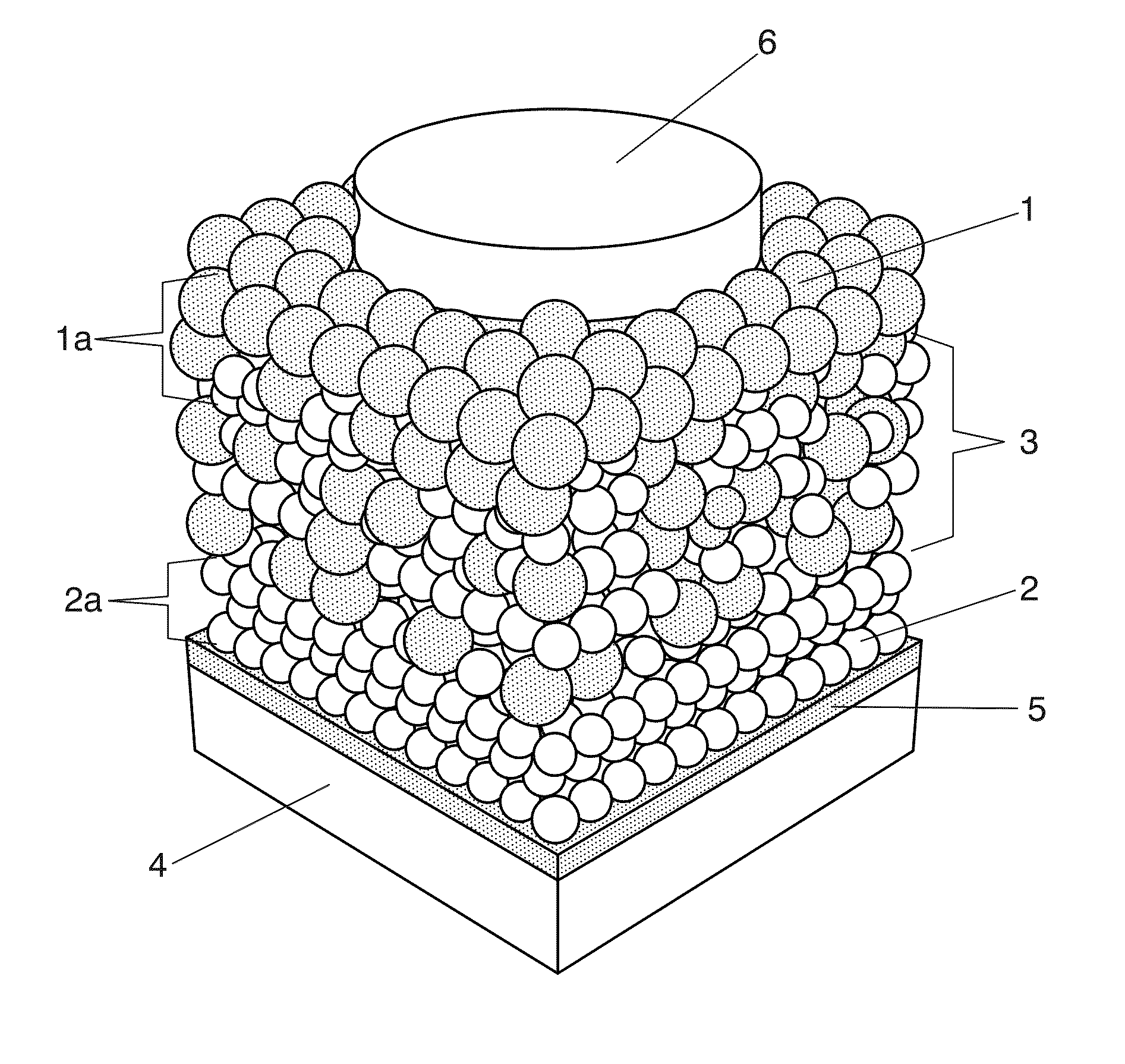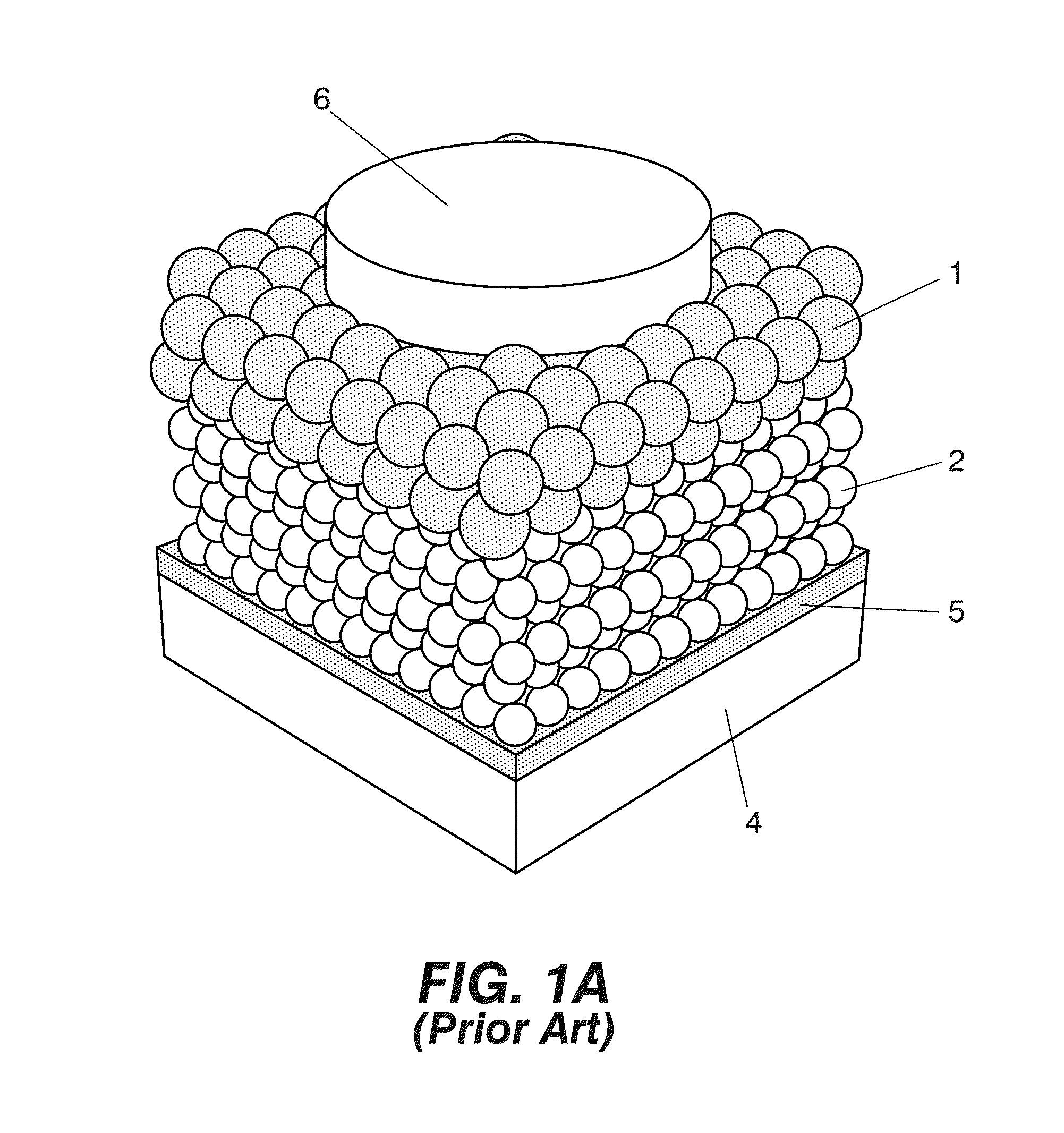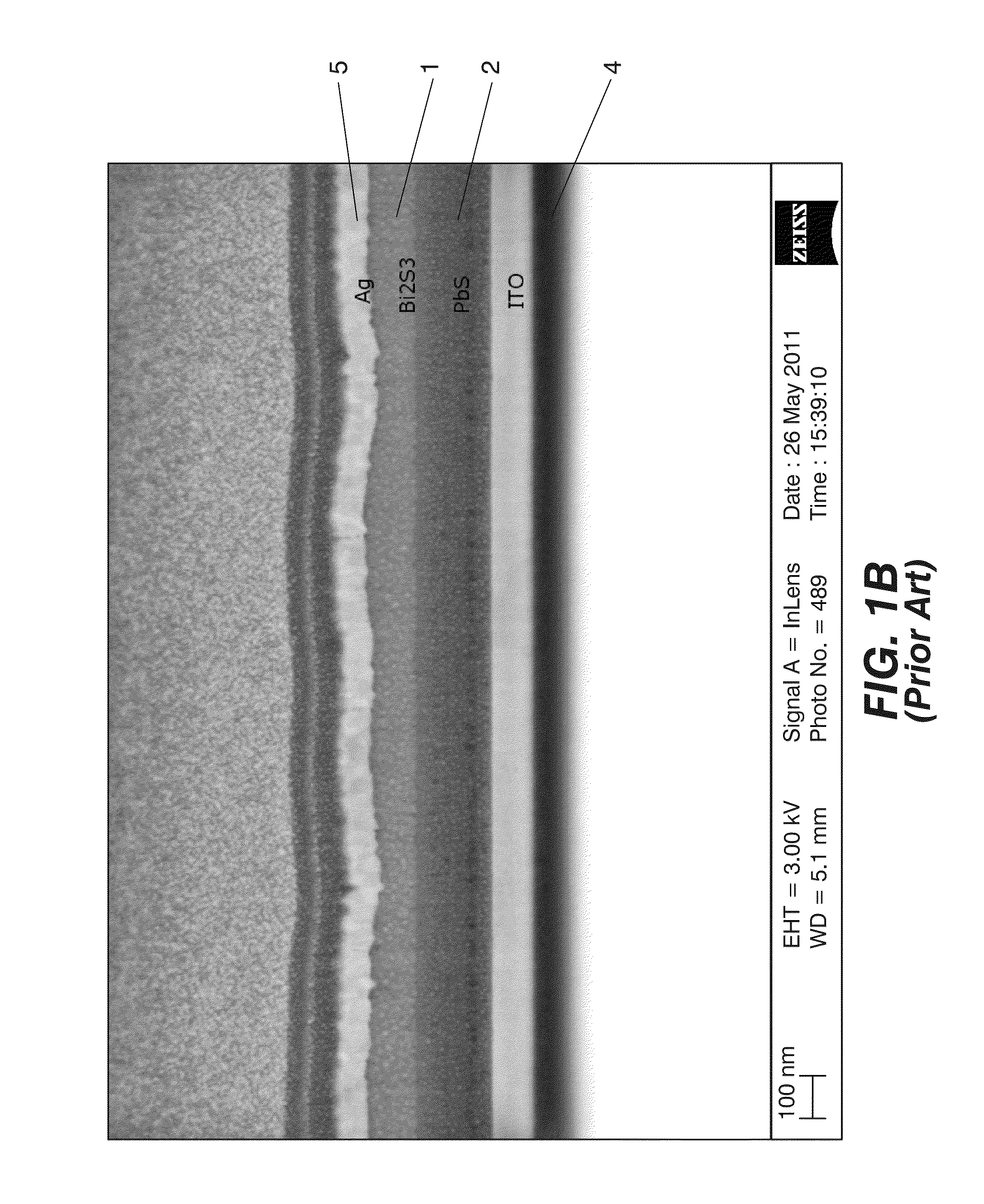Photovoltaic nanocomposite comprising solution processed inorganic bulk nano-heterojunctions, solar cell and photodiode devices comprising the nanocomposite
a nano-composite and photovoltaic technology, applied in photovoltaic energy generation, electrical equipment, basic electric elements, etc., can solve the problems of limited material availability of nanomaterials, small fraction of available semiconductor materials exploited, and limited control of carrier doping
- Summary
- Abstract
- Description
- Claims
- Application Information
AI Technical Summary
Benefits of technology
Problems solved by technology
Method used
Image
Examples
Embodiment Construction
[0010]The present invention is intended to overcome the afore mentioned drawbacks of prior art by providing a photovoltaic nanocomposite and a solar cell device comprising the photovoltaic nanocomposite.
[0011]According to the invention, the photovoltaic nanocomposite comprises a film of solution processed semiconductor materials comprising a n-type material selected from n-type quantum dots and n-type nanocrystals, and a p-type material selected from p-type quantum dots and p-type nanocrystals, wherein
[0012]the n-type material has a conduction band level at least equal, compared to vacuum level, to that of the p-type material,
[0013]the p-type material has a valence band at the most equal, compared to vacuum level, to that of the n-type material.
[0014]at least a portion of the n-type material and at least a portion of the p-type material are present in a bulk nano-heterojunction binary nanocomposite layer comprising a blend of the n-type material and the p-type material.
[0015]The p-t...
PUM
| Property | Measurement | Unit |
|---|---|---|
| thickness | aaaaa | aaaaa |
| thickness | aaaaa | aaaaa |
| thickness | aaaaa | aaaaa |
Abstract
Description
Claims
Application Information
 Login to View More
Login to View More - R&D
- Intellectual Property
- Life Sciences
- Materials
- Tech Scout
- Unparalleled Data Quality
- Higher Quality Content
- 60% Fewer Hallucinations
Browse by: Latest US Patents, China's latest patents, Technical Efficacy Thesaurus, Application Domain, Technology Topic, Popular Technical Reports.
© 2025 PatSnap. All rights reserved.Legal|Privacy policy|Modern Slavery Act Transparency Statement|Sitemap|About US| Contact US: help@patsnap.com



